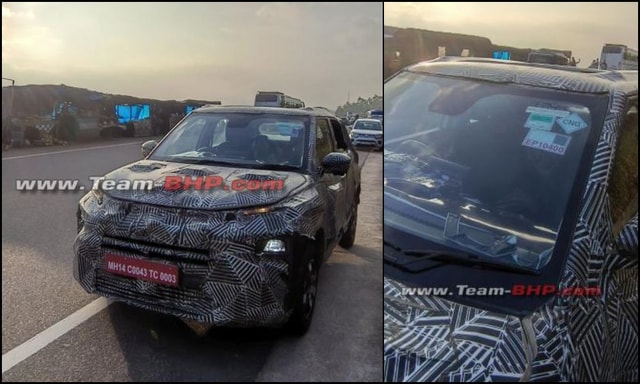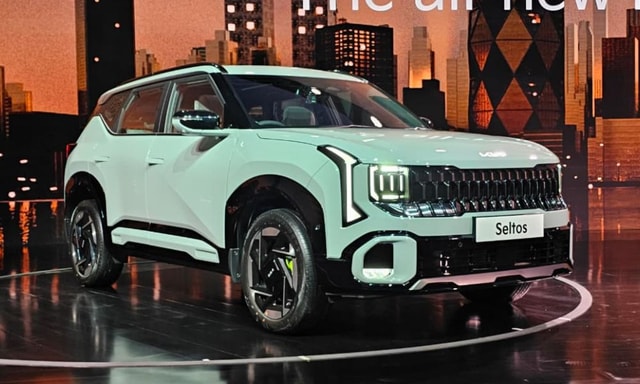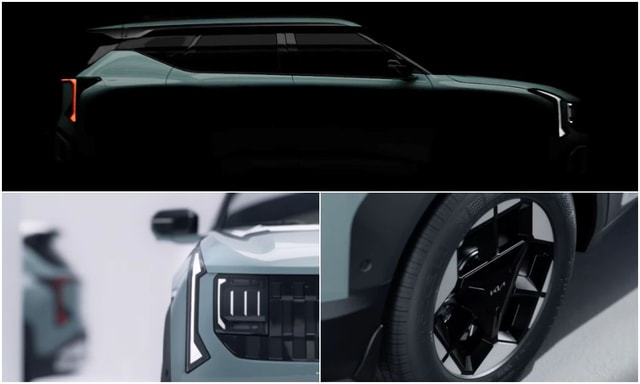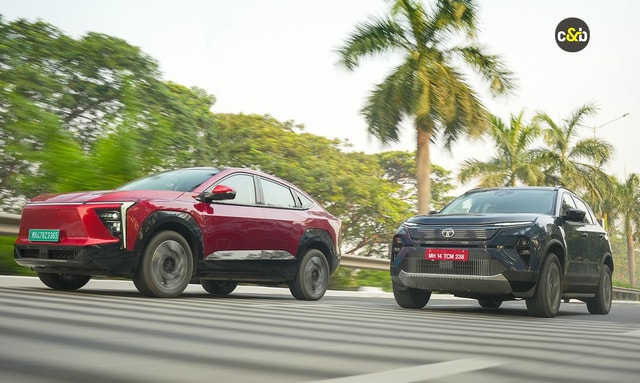All You Need to Know About BS-VI Fuel and How it Helps Reduce Pollution

- The Bharat Stage-VI emission regulations are the same as the Euro 6
- The BS-VI fuels sulfur content is much lower than its predecessor
- The BS-VI fuel is more expensive than the BS-IV.
In 2020, India took a significant technological leap to make the country's auto industry more environment-friendly. The announcement of the BHARAT Stage-VI fuel came as no surprise, especially after rapidly increasing pollution levels.
If you thought the BS-IV norms were too much, wait until you hear all about the BS-VI emission norms. But, what changes do the BS-VI norms bring, and how can it curb pollution? Well, this article will demystify all the key questions surrounding the BS-VI emission regulations.

Photo Credit: unsplash.com
How Will Automakers Switch to BS-VI?
It is one of the burning questions! Typically, automakers will take two-pronged routes to make cars BS-VI complaints. It involves engine work and a round of after-treatment. Manufacturers will include fuel injector design and enhanced combustion chamber in the in-cylinder measures. As a result, cars can enjoy finer atomization of fuel.
The cars will also employ a Lean NOx Trap (LNT) or SCR system to handle high levels of NOx in diesel engines. On the flip side, the exhaust treatment system will curb pollutants like NOx and PM.
How is BS-VI Different From BS-IV?
Thanks to the updated Bharat Stage emissions norms, the NOx level will reduce drastically by 68% for diesel engines and 25% for petrol. The reduced NOX levels will also be achievable through an 82% reduction in Particulate Matter levels. Moreover, for the first time in the Indian auto industry, petrol engines will attract regulation for particulate-matter production.
Between the two norms, there is also a difference in terms of Nitrogen Oxide and Sulphur content. It is worth mentioning that the BS-VI engines emit five times lesser traces of sulfur than B-IV.
The BS-VI norms also led to the introduction of Selective Catalytic Reduction (SCR) and Diesel Particulate Filter (DPF). Unlike the BS-IV criteria, BS-VI makes Onboard Diagnostics mandatory for all cars and vehicles.

What Difference Will BS-VI Make on Cars Costs?
Auto experts have already predicted an incoming surge in vehicle costs. Upgrading the diesel vehicles according to the BS-VI norms will incur more charges. Naturally, automakers will pass on this cost to the consumers. But, this does not mean that cars prices will skyrocket.
The range of diesel cars might get dearer by up to Rs. 1 lakh. On the other hand, you can expect a hike of Rs.10,000 to rs.20,000 in petrol car variants.
Can a BS-IV Car Run on BS-VI Fuel?
The good news is that it is possible to run your BS-IV car on BS-VI fuel. The only minor change between the BS-VI and BS-IV fuel is reducing sulfur content. We don't think that cleaner fuel has any potential harm for BS-IV cars.
Even in the older engines, you can expect a slight reduction of emission levels with BS-VI fuel.

Photo Credit: unsplash.com
And that was all you needed to know about BS-VI. Do you think this move is the ultimate solution to the auto industry's pollution troubles?
Trending News
 1 min readEU-Spec Citroen e-C3 EV Spied In India
1 min readEU-Spec Citroen e-C3 EV Spied In India
Latest News
 car&bike Team | Dec 10, 2025Aston Martin Launches Watch Collection With Timex, Prices Start At Rs. 17,995The collection brings Aston Martin’s iconic design language from road to wrist through two pillars along with automotive-inspired detailing.1 min read
car&bike Team | Dec 10, 2025Aston Martin Launches Watch Collection With Timex, Prices Start At Rs. 17,995The collection brings Aston Martin’s iconic design language from road to wrist through two pillars along with automotive-inspired detailing.1 min read car&bike Team | Dec 10, 2025Facelifted Tata Punch CNG Spied Testing Ahead Of DebutCompared to previous spyshots of the Punch facelift, the CNG vehicle here looks to have missed out on some kit.1 min read
car&bike Team | Dec 10, 2025Facelifted Tata Punch CNG Spied Testing Ahead Of DebutCompared to previous spyshots of the Punch facelift, the CNG vehicle here looks to have missed out on some kit.1 min read Seshan Vijayraghvan | Dec 10, 2025All-New Kia Seltos Unveiled: A Detailed Look In PicturesBookings for the new Kia Seltos will commence from December 11, while the price announcement will happen on January 2, 2026.2 mins read
Seshan Vijayraghvan | Dec 10, 2025All-New Kia Seltos Unveiled: A Detailed Look In PicturesBookings for the new Kia Seltos will commence from December 11, while the price announcement will happen on January 2, 2026.2 mins read Jaiveer Mehra | Dec 10, 20252026 Kia Seltos Makes Global Debut; India Launch On January 2, 2026Second-gen Seltos debuts Kia’s latest design language with design elements borrowed from the new Telluride SUV.4 mins read
Jaiveer Mehra | Dec 10, 20252026 Kia Seltos Makes Global Debut; India Launch On January 2, 2026Second-gen Seltos debuts Kia’s latest design language with design elements borrowed from the new Telluride SUV.4 mins read car&bike Team | Dec 10, 20252026 Kia Seltos World Premiere Highlights: Specifications, Features, Images1 min read
car&bike Team | Dec 10, 20252026 Kia Seltos World Premiere Highlights: Specifications, Features, Images1 min read car&bike Team | Dec 10, 20252026 Kia Seltos World Premiere In India Today: What To Expect From Gen 2 SUVOne of the most popular compact SUVs on sale in India is about to undergo a complete transformation as it enters its second generation in 2026. Here's all we know about the new Kia Seltos so far.3 mins read
car&bike Team | Dec 10, 20252026 Kia Seltos World Premiere In India Today: What To Expect From Gen 2 SUVOne of the most popular compact SUVs on sale in India is about to undergo a complete transformation as it enters its second generation in 2026. Here's all we know about the new Kia Seltos so far.3 mins read
 Shams Raza Naqvi | Dec 10, 20252025 Mini Cooper Convertible Review: More Colour On Indian RoadsThe updated Mini Cooper Convertible is set to be launched in the Indian market in the next few days. We drive it around Jaisalmer for a quick review.1 min read
Shams Raza Naqvi | Dec 10, 20252025 Mini Cooper Convertible Review: More Colour On Indian RoadsThe updated Mini Cooper Convertible is set to be launched in the Indian market in the next few days. We drive it around Jaisalmer for a quick review.1 min read Bilal Firfiray | Dec 8, 2025Tata Sierra Review: India’s New Favourite?Marking its return after a few decades, the reborn Sierra has made everyone sit up and take notice. But is it worth the hype?10 mins read
Bilal Firfiray | Dec 8, 2025Tata Sierra Review: India’s New Favourite?Marking its return after a few decades, the reborn Sierra has made everyone sit up and take notice. But is it worth the hype?10 mins read Girish Karkera | Dec 4, 20252026 Honda Prelude First Drive: Domesticated Civic Type RA sporty-looking coupe built to give customers a taste of performance but not at the expense of everyday practicality.5 mins read
Girish Karkera | Dec 4, 20252026 Honda Prelude First Drive: Domesticated Civic Type RA sporty-looking coupe built to give customers a taste of performance but not at the expense of everyday practicality.5 mins read Seshan Vijayraghvan | Nov 29, 2025Mahindra XEV 9S First Drive Review: Big Electric SUV, Bigger ExpectationsThe XEV 9S lands at a time when the EV crowd is growing fast. It’s a big, born-electric, three-row SUV that starts under 20 lakh. It sits close to the XUV700 in size, but the brief is very different. Here’s what it’s like on the road.11 mins read
Seshan Vijayraghvan | Nov 29, 2025Mahindra XEV 9S First Drive Review: Big Electric SUV, Bigger ExpectationsThe XEV 9S lands at a time when the EV crowd is growing fast. It’s a big, born-electric, three-row SUV that starts under 20 lakh. It sits close to the XUV700 in size, but the brief is very different. Here’s what it’s like on the road.11 mins read Bilal Firfiray | Nov 26, 2025Tata Harrier EV vs Mahindra XEV 9e: Battle Of India’s Electric TitansWhen India made two electric SUVs battle it out, the winner is the buyer. They get a choice to take home what’s best suited for them – and read on to find out which one is better for YOU.1 min read
Bilal Firfiray | Nov 26, 2025Tata Harrier EV vs Mahindra XEV 9e: Battle Of India’s Electric TitansWhen India made two electric SUVs battle it out, the winner is the buyer. They get a choice to take home what’s best suited for them – and read on to find out which one is better for YOU.1 min read






























































































































